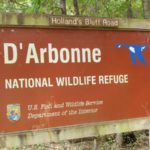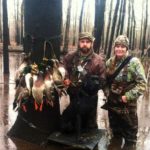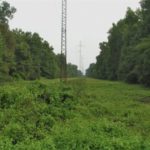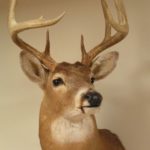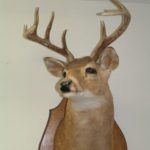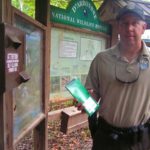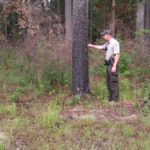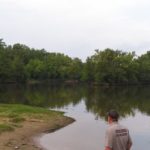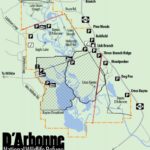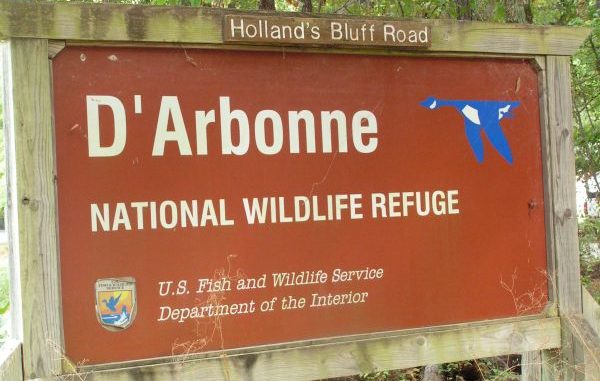
D’Arbonne National Wildlife Refuge is often overlooked, but it offers hunters and anglers incredible opportunities for success. Here are some thoughts from those in the know.
John Hanks waded the shallow, flooded hardwood bottom off Point Road, hopeful of a successful morning duck hunt. He wasn’t disappointed.
He had been with groups that killed ducks before, but he wasn’t sure if he actually shot one himself or not. Today, as a lone mallard flew over the small decoy spread, he nailed it.
His first mallard duck.
There were more.
“I was just a teenager, but I remember it well,” Hanks said, now a couple of decades older. “That’s my first real memory of hunting D’Arbonne National Wildlife Refuge.”
Over the years, he made many more good memories on this 17,419-acre public hunting area established in 1975.
But, unless you are like Hanks and grew up in the area, you might not have even given this refuge more than a passing glance.
Normally, when you think about looking for a good place to hunt, you envision heading down some long gravel or dirt country road or looking on a map for the deep woods.
But this public hunting area — one of Northeast Louisiana’s best — is hidden in plain sight.
D’Arbonne NWR is located just seven miles north of West Monroe. To the north of the property is Farmerville.
Nestled quietly along Highway 143 between the two are the refuge boundaries. The diverse mix of hardwoods, pines, ridges and swamps is made more appealing because of picturesque Bayou D’Arbonne, which bisects the area.
“D’Arbonne (NWR) is a little piece of outdoor paradise,” he said. “It offers a different kind of hunting experience. It’s close to town. It isn’t easy, but it gives you a little more-serene type of hunting; no four-wheelers allowed. You have to park in designated areas and walk in.
“It’s a little more work, but it’s worth it.”
What’s the payoff?
“It’s got a great deer herd,” Hanks saids. “And, depending on the water level, it can be good or great for duck hunting. Even in low water, there is always an old cypress slough or brake that has water and ducks. And at times, you don’t need anything but a pair of waders and a half dozen decoys, plus the willingness to walk in a ways.
“It’s full of squirrels, too. In fact, the refuge has a little bit of everything Louisiana. It has the deep, overflow hardwood swamps, ridges, green timber, old stands of pine in the hills — all in one place.”
And if you have time, there’s another bonus.
“Bayou D’Arbonne runs through the area, and I’ve caught loads of big bass and crappie,” Hanks said.
What a menu: duck hunting for breakfast, crappie fishing for lunch and deer hunting for supper.
As Hanks already pointed out, though, it isn’t easy.
If you plan to take a trip to D’Arbonne NWR, make sure you read up on and follow the rules and regulations. As federal land goes, it is not as restrictive as some areas, but the laws are strictly enforced.
Some of the more-important regs include making sure you have a free Refuge Hunting Permit in your possession whether you are scouting, hunting, fishing or even bird watching.
Also, make sure you park in designated areas. And no motorized vehicles are allowed off main access roads.
A self-clearing permit is required daily for hunting on the refuge. They can be obtained at any entry point.
You can not leave anything overnight; everything you bring in must come out with you at the end of the day.
“If you hunt this area, the first thing you need is basic knowledge of the terrain. You can get a start by studying a map, but the best way is to spend time there,” Hanks said. “Patience and scouting are the two best things I can tell you.
“Do your homework. Keep notes. Be aware of the water levels, and know the lay of the land.”
Hanks said locating deer is a matter of finding changes in the terrain. They usually walk the edges of thickets or sloughs or along managed timber areas.
The refuge has an aggressive management plan that includes controlled burning, planting food sources, etc., designed to provide good hunting opportunities.
To find waterfowl, you can let the ducks do the scouting for you.
“You need to know where the water is, but after that you just find the ducks,” he said. “You go wherever they are — and be ready to move with them.
“They may stay in one area for a week, or they may just be there a day or two.”
Nobody knows the lay of the land on DNWR better than Brett Hortman. Besides the ducks and the deer, he spends more time on the refuge than anybody else — he’s the refuge manager and his office is at the main entrance to the refuge.
“If there is one thing that sets this refuge apart from others in our state, it would have to be the diversity of the habitat,” Hortman said. “We have a little bit of everything. There are all types of deer habitat and, because so much of the refuge often floods (up to 80 percent) at the end of the year, we have huge areas for waterfowl. Some areas are closed to waterfowling, so make sure you observe those boundaries. We also have some of the best areas for squirrel hunting in our region.”
“We have adequate access roads in the refuge, but hunters wanting to get to the deeper parts of it have to walk a good way,” Hortman said.
This walk-in access to the interior is part of the management plan.
“That is by design to help offer hunters less-crowded conditions, if they are willing to make the extra effort,” Hortman said. “We do not allow any kind of vehicles off the main roads and parking lots, including ATVs.
“You can boat in to some of the more-remote parts, but you still have to follow all the regulations and permitting requirements.”
There are four public boat ramps. The largest and most popular is at the center of the refuge on Holland Bluff Road.
Hortman agreed with Hanks that one of the main draws is the ability to get away from other hunters: The farther you are able to walk in, the more peace and quiet you can get.
Of course, the walk-in regulation does become a challenge for hunters who harvest deer, but most hunt with a buddy, take some sort of wheeled cart or use shoulder harnesses to aid in getting their deer out.
As with all public property, hunting spots are on a first-come, first-served basis every day. If you are in an area before daylight and see another hunter getting close, you can always flash your light and they will normally go find another spot.
Hortman said there are very few problems with hunters encroaching on each other.
His deer-hunting advice is also similar to that of Hanks.
“Go in there and look for something different; then look for deer sign,” he suggested. “We don’t have a lot of huge trophy (bucks), but we had two really big 11-points taken last year. Eight-points aren’t uncommon.”
And there’s plenty of opportunities for success.
“The deer herd is healthy,” Hortman said. “Deer feed on mast like acorns, but we also have an abundance of fresh, green vegetation and grasses. When the water goes down at the end of spring, it is amazing how quickly the woods and the open areas green back up. One of the deer’s favorite foods here is smilax, or green briers; they stay green after everything else goes dormant when it turns cold. Deer love them.”
Hortman said he expects usage of the area to go up some this year, due to the closing of the nearby state Union Parish Wildlife Management Area. But he said the refuge can handle it.
Hanks had one more piece of advice for novice or veteran hunters on this area.
“One of the most-important pieces of equipment you can have here is a good compass,” he said. “There aren’t many landmarks, and if you get turned around it can be a long way out.
“I recommend a compass over a GPS, because if things go wrong the batteries in a compass won’t die on you.”
